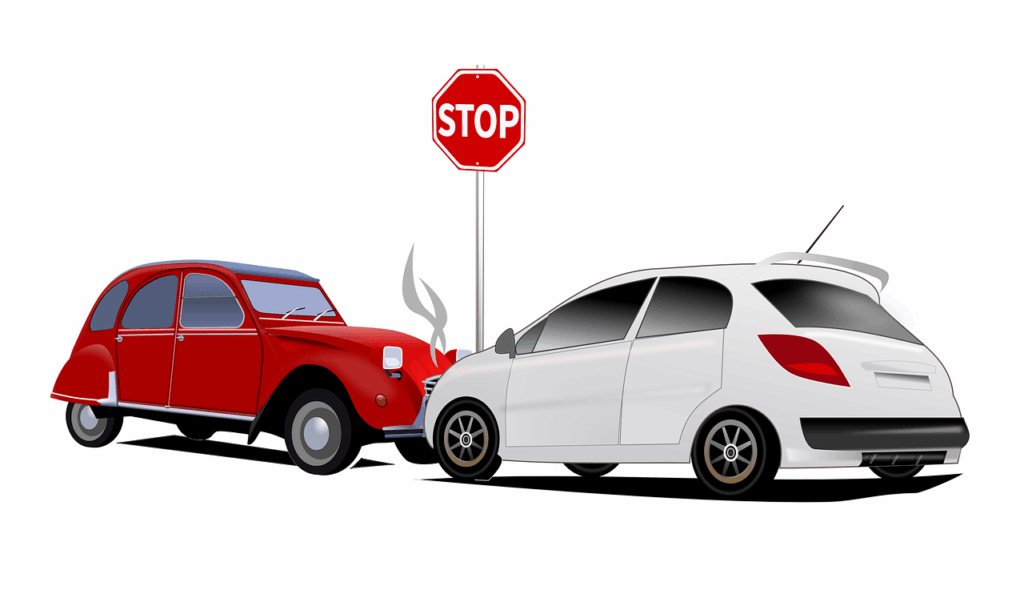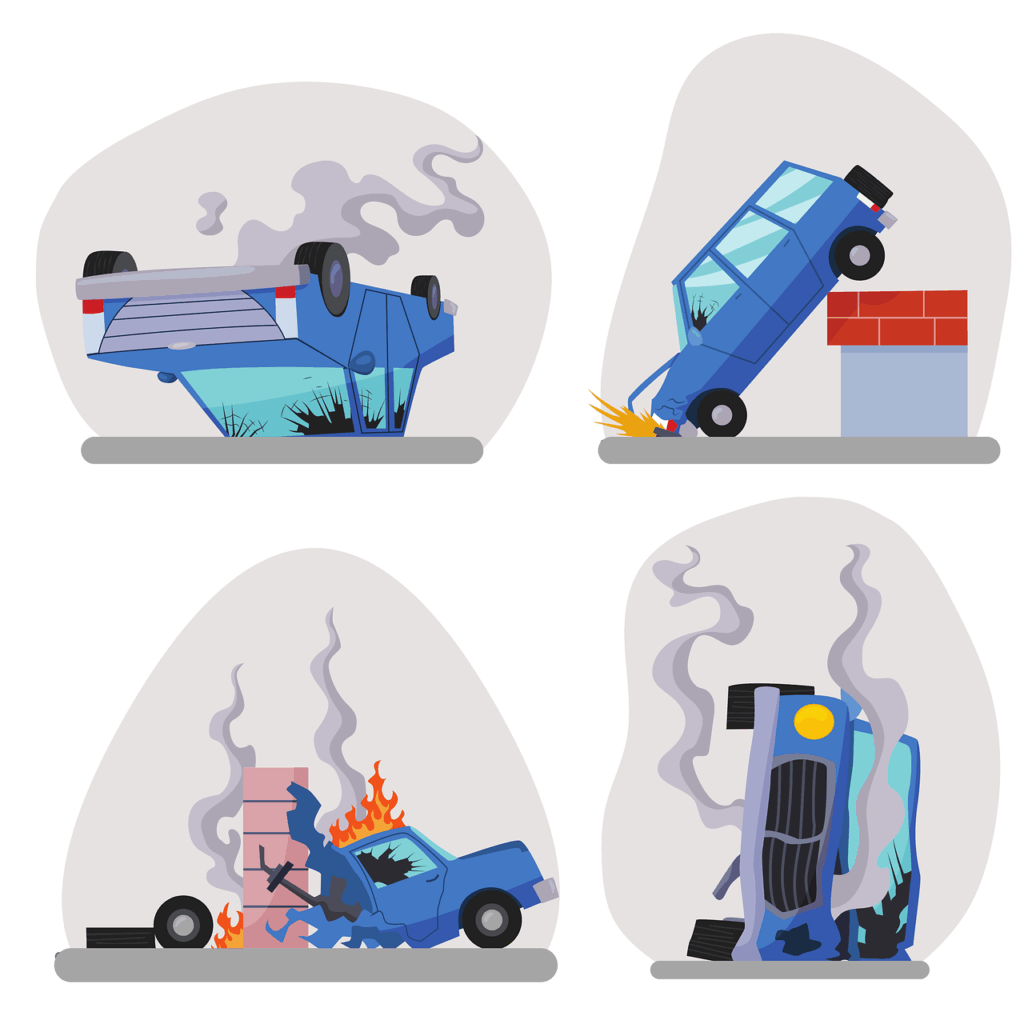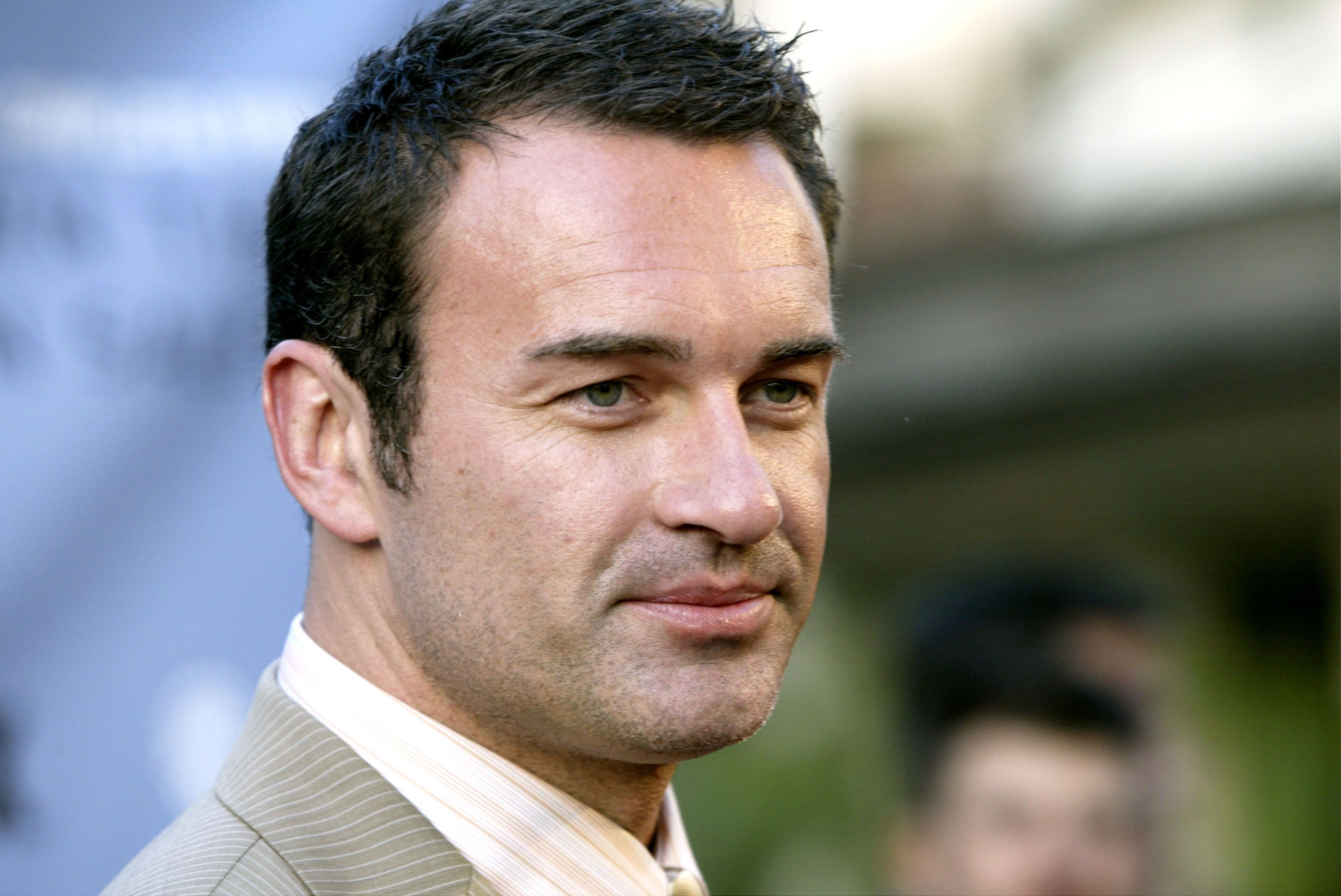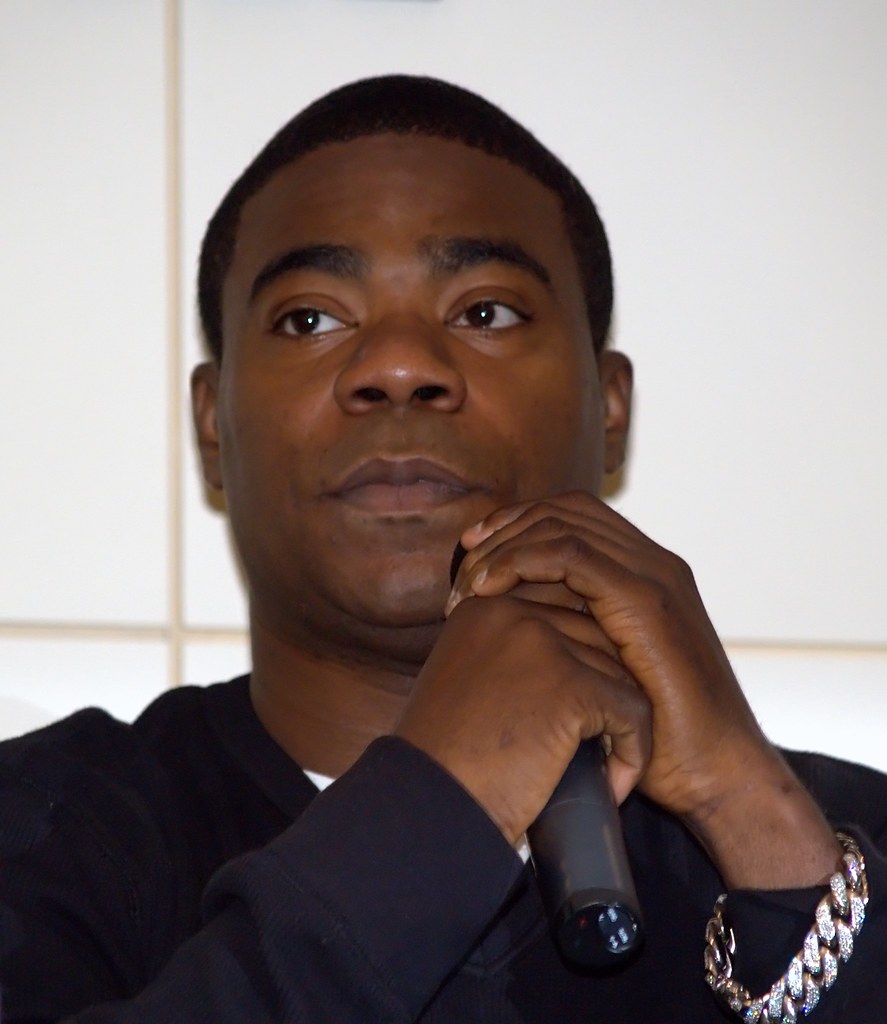
On a serene summer night in 2014, the life of renowned comedian and actor Tracy Morgan, along with several companions, was irrevocably altered on a stretch of the New Jersey Turnpike. What began as a routine return from a comedy show in Delaware transmuted into a scene of catastrophic devastation, igniting a national conversation about road safety, driver fatigue, and corporate responsibility. The ensuing legal battle against retail behemoth Walmart would not only redefine Tracy Morgan’s personal and professional trajectory but also set a significant precedent in the realm of personal injury law, culminating in a monumental $90 million settlement.
This incident, often cited as one of the most high-profile trucking cases in recent memory, laid bare the critical vulnerabilities within the commercial trucking industry, especially concerning the relentless pressures on drivers and the potential for tragic consequences. It forced a candid examination of how major corporations manage their logistical operations and uphold safety standards, not just for their employees but for every individual sharing the nation’s roadways. The story of Tracy Morgan’s accident and the subsequent legal and personal journey serves as a powerful reminder of the human cost when such standards falter.
Our in-depth exploration will unpack the intricate layers of this landmark case, from the minute-by-minute unfolding of the tragic event to the complex legal maneuvers and the profound human resilience displayed by Tracy Morgan. We will examine the critical factors that led to the collision, the legal arguments that held a corporate giant accountable, and the lasting impacts that continue to resonate within both the legal and transportation sectors. This is more than just a recounting of facts; it is a narrative of justice sought, accountability achieved, and the enduring power of a story that continues to inspire change.

1. **The Catastrophic Night: Details of the June 7, 2014 Crash on the New Jersey Turnpike**The early morning hours of June 7, 2014, cast a long, fateful shadow over the New Jersey Turnpike. At approximately 5 a.m., a limousine van carrying Tracy Morgan, his close friend and fellow comedian James McNair, and several other passengers was struck from behind by a Walmart tractor-trailer. The impact was devastating, triggering a multi-vehicle pile-up involving six other cars and overturning the minibus, transforming a routine commute into a scene of unimaginable chaos and destruction. Tyrone Gale, the driver of the minibus, vividly recalled the immediate aftermath, stating, “I just remember the impact. We didn’t know which way was up, which way was down. I don’t know if we flipped several times or one time.” The severity of the collision instantly signaled a tragedy of immense proportions.
The accident occurred as the group was returning from a comedy performance in Delaware, heading northbound towards New York City. The quiet predawn highway suddenly became a crucible of shattered metal and broken lives. Investigators later determined that the Walmart truck driver, Kevin Roper, was traveling at 65 mph in a construction zone where the posted speed limit was a mere 45 mph. This excessive speed, combined with a critical failure to brake in time for traffic that had slowed ahead due to the construction, directly led to the violent rear-end collision. The sheer force of the impact underscored the inherent dangers of commercial vehicles when operated negligently.

2. **The Victims’ Plight: Tracy Morgan’s Critical Injuries and James McNair’s Tragic Death**The immediate human toll of the crash was profound and heartbreaking. When emergency workers arrived at the chaotic scene, Tracy Morgan was found critically injured. He was promptly flown by helicopter to Robert Wood Johnson University Hospital, where he remained in a medically induced coma for eight days, though some accounts state two weeks, indicating the severity and duration of his critical condition. Morgan sustained a litany of severe injuries, including a traumatic brain injury, multiple broken bones, a severely damaged leg, a broken femur, a broken nose, and several broken ribs. His survival, given the extent of his physical trauma, was nothing short of miraculous, foreshadowing an arduous and protracted road to recovery.
Tragically, another passenger in the limousine, James McNair, affectionately known as “Jimmy Mack” within the comedy community, was pronounced dead at the scene. McNair was a devoted father to Jamel and Danita and the eldest of seven siblings, whom he cared for deeply, according to his sister Pamela McNair. His untimely death left an unfillable void in the lives of his family and friends, casting a somber pall over the entire incident. The limousine’s driver and three other passengers also sustained serious injuries, with the driver, like Morgan, suffering brain trauma, further illustrating the widespread and devastating impact of the crash on everyone involved.

3. **The Fatigued Driver: Kevin Roper’s Condition, Excessive Hours, and Speeding**Central to the unfolding tragedy was the conduct of the Walmart truck driver, Kevin Roper. Subsequent investigations revealed a deeply troubling narrative of extreme fatigue and reckless driving. Roper had reportedly been awake for more than 24 hours before the incident, a period of wakefulness that would profoundly impair anyone’s judgment and reaction time. Specifically, it was uncovered that he had driven 800 miles, equating to 12 hours, in his own personal vehicle from his home in Georgia to a Walmart facility in Delaware. Upon arrival, he immediately commenced a 14-hour commercial driving shift. The accident occurred approximately 13.5 hours into this already extended shift.
This shocking schedule placed Roper far beyond any reasonable or safe operating parameters. His severe fatigue played a significant and indisputable role in the tragic crash, directly contributing to his inability to perceive and react to the slowed traffic ahead. Compounding the issue of fatigue was his excessive speed; he was driving 65 mph in a designated 45 mph construction zone. The combination of prolonged wakefulness and flagrant disregard for posted speed limits created a perilous scenario, transforming a routine journey for Morgan and his friends into a fatal encounter that was, in essence, a disaster waiting to happen. The details of Roper’s condition and actions firmly positioned him as the direct cause of the collision, sparking intense scrutiny of the systemic factors that allowed such circumstances to arise.

4. **Walmart’s Alleged Negligence: Violations of FMCSA Regulations and Safety Failures**Following the catastrophic accident, Tracy Morgan’s legal team swiftly moved to seek justice, filing a lawsuit against Walmart. The core of their claim rested on the assertion that Walmart was directly responsible for the accident due to its egregious negligence in allowing an overworked and dangerously fatigued driver to operate one of its commercial trucks. The lawsuit meticulously outlined how Walmart’s internal scheduling practices and apparent lack of oversight contributed to a foreseeable tragedy. It argued that the company knew or should have known about Roper’s hazardous condition and his extensive personal travel immediately prior to his commercial shift, which placed him in violation of critical safety regulations.
Investigations brought to light that Roper had been working consecutive shifts and had explicitly violated safety regulations established by the Federal Motor Carrier Safety Administration (FMCSA). A key violation highlighted was the critical “34-hour restart rule,” a regulation specifically designed to combat driver fatigue by ensuring adequate rest periods. Morgan’s attorney emphasized this point, stating, “The fact that Walmart allowed this driver to be on the road at the time of the accident speaks volumes about their safety practices. They failed to properly monitor their drivers and allowed them to work beyond the safe limits.” The lawsuit further alleged that Walmart had a “custom and practice of recklessly and intentionally allowing its drivers to drive for prolonged and unreasonable periods of time,” painting a picture of systemic safety failures at the corporate level, rather than an isolated incident of driver error. This broadened the scope of accountability beyond the individual driver to the corporation employing him.

5. **The Immediate Legal Recourse: Filing of the Personal Injury Lawsuit Against Walmart**In the wake of the devastating crash, with Tracy Morgan still recovering from his life-threatening injuries and the McNair family mourning their profound loss, legal action became an imperative step towards accountability. On July 10, 2014, just over a month after the accident, Tracy Morgan, along with two other injured passengers, officially filed a personal injury lawsuit against Walmart in the U.S. District Court in New Jersey. The lawsuit was a direct challenge to the retail giant, asserting that the company’s negligence was the root cause of the horrific collision and its tragic consequences. It sought comprehensive compensation for Morgan’s extensive injuries, immense pain and suffering, and significant economic losses incurred as a result of the accident.
The lawsuit specifically alleged that Walmart “knew or should have known that it was unreasonable for Mr. Roper to commute more than 700 miles from his home in Jonesboro, Georgia to work at a Walmart facility in Smyrna, Delaware, especially immediately before he was to commence a long shift operating a truck that weighed approximately 30-40 tons.” This detailed accusation underscored the argument that Walmart’s responsibility extended to the pre-shift activities and overall well-being of its drivers. The filing immediately propelled the case into the national spotlight, initiating a legal battle that would attract widespread media attention and ignite crucial discussions about corporate responsibility and road safety within the trucking industry.

6. **Walmart’s Initial Stance and Public Backlash: Attempting to Blame Passengers and the Shift to Liability**
Upon the filing of the lawsuit, Walmart’s initial response stirred considerable controversy and drew swift public condemnation. The company initially attempted to deflect some of the responsibility for the accident, alleging comparative negligence on the part of the passengers. Walmart argued that Morgan and others bore some responsibility by not wearing seatbelts at the time of the collision. This line of defense, which sought to shift blame from the truck driver’s clear negligence to the victims, was met with significant public backlash and outrage. Critics argued that such a defense was insensitive and a misguided attempt to avoid corporate accountability for the driver’s actions.
However, as the legal proceedings advanced and the weight of evidence mounted, particularly regarding Kevin Roper’s extreme fatigue and violations of federal safety regulations, Walmart’s position evolved. The public outcry and the irrefutable findings of the investigation likely contributed to a change in strategy. Ultimately, Walmart did not contest liability for the accident. This crucial decision marked a turning point in the legal battle, signifying an acknowledgment of their responsibility and paving the way for serious settlement negotiations. This shift away from blaming the victims and towards accepting liability was a significant victory for Morgan and the other plaintiffs, underscoring the legal team’s effectiveness in highlighting the corporate giant’s culpability.

7. **The Confidential Settlement: Announcing the $90 Million Agreement for Morgan and Other Compensatory Amounts**
After months of intense legal proceedings, negotiations, and mounting public pressure, a significant breakthrough was achieved. In May 2015, less than a year after the tragic crash, Tracy Morgan reached a settlement with Walmart for a reported $90 million. While the specific terms of the settlement were officially confidential, multiple news outlets widely reported the staggering figure, which was intended to cover Morgan’s extensive medical costs, lost wages, and long-term care, as well as compensate for his immense pain, suffering, and emotional distress. Morgan’s legal team consistently emphasized that this financial compensation was absolutely necessary to address the profound physical, emotional, and financial damages caused by the life-altering accident.
In a public statement following the settlement, Morgan expressed a complex mix of gratitude and sorrow: “Money can’t bring back my friend Jimmy Mack or undo the pain, but it will allow me to keep moving forward and help prevent this from happening to others.” This statement encapsulated the dual nature of the settlement – a substantial financial award for his injuries and a profound acknowledgment of the irreplaceable loss. Beyond Morgan’s settlement, other victims also received compensation. The family of James McNair, who tragically died in the crash, received a $10 million settlement from Walmart. Additionally, the limousine driver, Tyrone Gale, who also sustained serious injuries including brain trauma, received $1.5 million. These settlements collectively underscored Walmart’s responsibility for the accident and provided crucial financial resources to all those whose lives were forever altered by the catastrophic event. Walmart U.S. President and CEO Greg Foran stated, “Walmart has been committed to doing what’s right to help ensure the well-being of all of those who were impacted by the accident. We worked closely with [Morgan’s lawyer Benedict P.] Morelli, and we are pleased to have reached an amicable settlement that ends this litigation. We are deeply sorry that one of our trucks was involved.”
8. **The Appeals Process and Initial Challenges to the Settlement**Following the announcement of the substantial settlement, the legal complexities of the Tracy Morgan case continued to unfold with a period of appeals. A few months after the initial agreement, the insurers for Walmart—National Indemnity Company and National Liability & Fire Insurance Company—appealed the settlement. Their contention was that the $90 million amount was excessively high, advocating for a reduced sum to mitigate their financial liabilities in the case.
Simultaneously, Walmart itself appealed the settlement. The corporation argued that its driver, Kevin Roper, was at fault for the accident, but to a lesser extent than had been presented during the proceedings. This stance suggested an attempt to recalibrate the degree of corporate responsibility and consequently reduce the compensatory amount. Such legal maneuvers underscored the persistent efforts by the defense to mitigate the financial implications of the judgment.
Despite the rigorous challenges mounted by both Walmart and its insurers against the $90 million settlement, the appeals process ultimately concluded with a reaffirmation of the initial agreement. After years of intricate negotiations, Walmart and its insurers agreed to honor and pay the full amount previously determined. This resolution brought a definitive end to the litigation without further dispute, decisively ensuring that the injured parties received the compensation that had been legally deemed appropriate.
Read more about: Taylor Swift’s Legal Odyssey: Unpacking the ‘Shake It Off’ Copyright Resolution, Industry Repercussions, and Emerging 2025 Courtroom Dramas
9. **Tracy Morgan’s Arduous Road to Recovery and Rehabilitation**The devastating impact of the crash left Tracy Morgan confronting an arduous and protracted journey toward recovery. After being placed in a medically induced coma for eight days—though some accounts specify a duration of two weeks—Morgan awoke to face immense physical and cognitive challenges. He had sustained a traumatic brain injury, multiple broken bones including a severely damaged leg and a broken femur, a broken nose, and several broken ribs. His path forward necessitated extensive surgeries, followed by months of rigorous physical therapy and cognitive rehabilitation.
Morgan vividly articulated the profound struggle of his initial recovery, stating, “I was in a coma for two weeks, and the doctors told my family they didn’t know if I would make it. I woke up, and I couldn’t even walk.” This stark account underscored the severity of his condition and the sheer determination required to commence his rehabilitation. He further elaborated, “I had to learn how to walk again. It was the hardest thing I’ve ever done.” For several months, he was confined to a wheelchair, navigating a profoundly difficult road ahead.
Beyond the substantial physical trauma, the accident inflicted a significant emotional and psychological toll on Tracy Morgan. He candidly shared, “I was in a very dark place,” recalling a period after the accident where he contemplated suicide. This revelation brought to light the extensive psychological ramifications accompanying such catastrophic events, demonstrating that the process of recovery encompasses far more than merely the healing of physical wounds, extending deeply into mental and emotional well-being.
Nevertheless, Morgan’s inherent resilience proved potent enough to overcome the despair. He frequently credits the unwavering support of his wife and children as instrumental in guiding him through each day. He recounted a particularly poignant experience: “When I was in my wheelchair, my daughter was 14 months old and I was able to see her take her first steps. That’s important to a man. That inspired me to get out of my wheelchair and I took my first steps. Now me and my daughter walk hand-in-hand for life because we learned how to walk at the same time. That’s magic.” This deeply personal motivation became a powerful catalyst for his relentless pursuit of healing.
10. **A Defining Comeback: Morgan’s Return to Stage and Screen**Despite initial widespread concerns that the catastrophic accident might irrevocably end his esteemed career, Tracy Morgan’s journey of recovery culminated in an inspiring professional comeback that resonated with audiences and critics alike. In 2015, he made a notable and emotional return to the public sphere at the Emmy Awards, delivering a poignant speech that signaled his gradual re-entry into the entertainment industry following intensive rehabilitation.
Morgan’s return to television was met with considerable anticipation, notably with his starring role in the series *The Last O.G.*, which premiered after his recovery. The show’s narrative themes of second chances and personal redemption resonated profoundly with viewers, reflecting and amplifying the very real-life journey of transformation Morgan himself had undergone. His capacity to infuse his art with his personal struggles demonstrated a remarkable fusion of artistic expression and lived experience.
His return to the demanding world of stand-up comedy proved equally triumphant. In his 2016 special, *Tracy Morgan: Staying Alive*, he candidly addressed the immense struggles he had faced in the aftermath of the accident, sharing his emotional odyssey of recovery with raw honesty and characteristic humor. This performance captivated both his dedicated fanbase and critical observers, unequivocally asserting that he was back in full creative force. Morgan powerfully articulated his renewed perspective, stating, “I can’t be mad at life. I’m thankful. I’m not angry. I’m grateful. I’m here for a reason. I’m stronger than I’ve ever been,” a testament to his indomitable spirit and profound sense of purpose.
11. **A New Perspective and Advocacy for Road Safety**The life-altering accident profoundly reshaped Tracy Morgan’s perspective on existence, leading him to a deepened sense of spirituality and a significant re-prioritization of his health and family. In numerous public interviews, Morgan has consistently spoken about how this harrowing experience fostered a renewed appreciation for life, shifting his focus toward foundational personal values above professional pursuits.
Beyond his personal transformation, Morgan embraced a crucial new role as an advocate for enhanced road safety. He has assiduously utilized his influential public platform to raise critical awareness regarding the pervasive issue of truck driver fatigue and the paramount importance of establishing and maintaining safe working conditions for all commercial drivers. He articulated this shift in purpose, stating, “I almost lost my life, and I’m here for a reason. It’s not just about telling jokes anymore. I’ve got a bigger purpose now, and I want to make sure people don’t have to go through what I went through.”
This advocacy extended beyond individual responsibility to highlight systemic issues within the broader trucking industry. Morgan’s poignant story and public statements became instrumental in sparking vital national conversations about the inherent risks associated with overworked drivers and the severe consequences stemming from inadequate regulatory oversight. His personal tragedy thus served as a potent catalyst for a broader public discourse on corporate accountability and the imperative of highway safety for all road users.
Read more about: Bill Gates’ Philanthropic Blueprint: An In-Depth Look at the Strategic Initiatives Driving Global Change in the Next Two Decades
12. **Systemic Changes Within Walmart: New Policies and Programs**In the immediate aftermath of the devastating crash and the subsequent high-profile lawsuit, Walmart, the corporate entity at the center of the legal proceedings, implemented significant systemic changes aimed at enhancing driver safety and preventing future incidents of a similar nature. The critical findings from the investigation, particularly those concerning the driver’s extensive personal commute and his immediate commencement of a commercial driving shift while fatigued, spurred the company to undertake a thorough reassessment of its operational protocols.
Specifically, Walmart instituted a revised policy requiring its drivers to reside within 250 miles of their designated reporting facility. Alternatively, if a driver’s commute exceeds this distance, the policy mandates that they must be present at their starting point at least nine hours prior to the commencement of their shift. This crucial policy adjustment directly addressed the issue of commercial drivers beginning their shifts already fatigued from prolonged personal travel, a central point of contention raised in Tracy Morgan’s lawsuit.
Furthermore, Walmart developed and rolled out a comprehensive “fatigue management program.” This proactive initiative was meticulously designed to educate all relevant stakeholders—including drivers, dispatchers, managers, and even their families—about the critical importance of ensuring that drivers report to duty in a refreshed and adequately rested state. These tangible measures signified a corporate acknowledgment of the systemic factors contributing to driver fatigue and represented a demonstrable commitment to fostering safer operating conditions across their extensive commercial vehicle fleet.
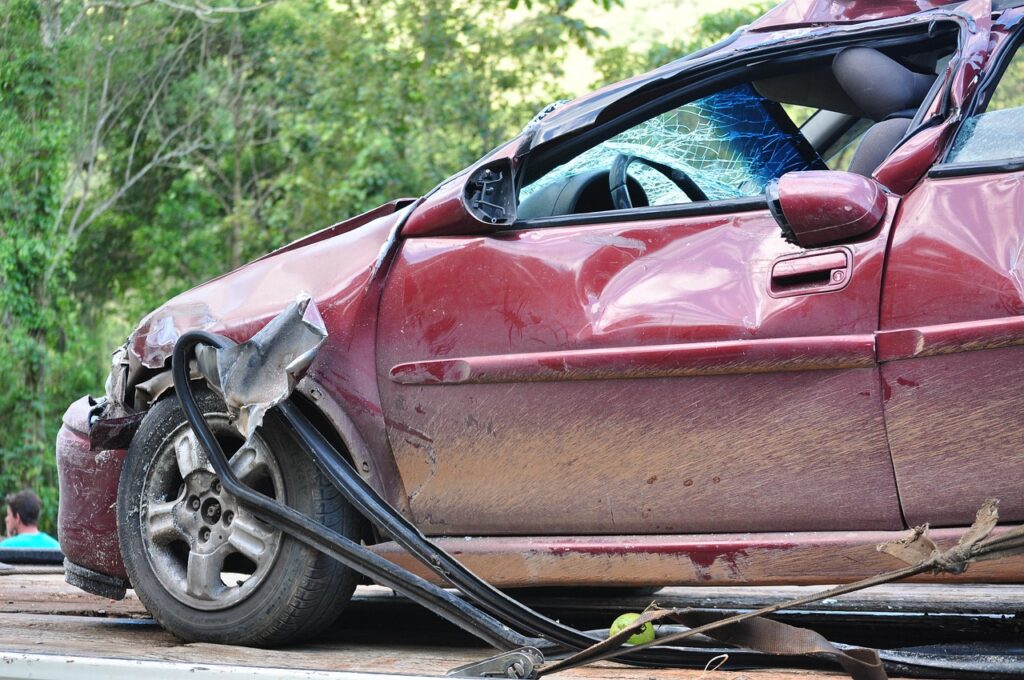
13. **Broader Industry Scrutiny and the Push for Stricter Regulations**The Tracy Morgan lawsuit transcended the specifics of individual accountability, casting a critical and enduring spotlight on the broader trucking industry and its prevailing safety practices. Investigations conducted in the wake of the crash revealed not only the specific negligence attributable to Walmart’s driver but also exposed a more pervasive systemic issue: the trucking industry as a whole faced intense scrutiny for what many perceived as inadequate safety protocols.
A central and significant concern brought to the forefront was the apparent lack of robust regulations governing driver rest periods. This regulatory gap was widely understood to be a substantial contributing factor to the increased incidence of accidents, particularly those directly attributable to driver fatigue, mirroring the circumstances that tragically affected Morgan and his companions. The high-profile nature of the incident injected a renewed and urgent impetus into calls for comprehensive reform.
The case spurred renewed and vigorous discussions about the necessity for stricter enforcement of existing federal regulations, such as the Federal Motor Carrier Safety Administration’s (FMCSA) “34-hour restart rule.” This specific regulation is meticulously designed to combat driver fatigue by ensuring adequate rest periods between shifts, and its clear violation in the Morgan case underscored the critical need for unwavering adherence and stringent monitoring across the industry.
Ultimately, the incident served as a powerful catalyst for both legislative and industry-wide efforts aimed at mitigating driver fatigue. Tracy Morgan’s narrative, extending beyond his personal recovery, transformed into a potent symbol for advocating fundamental changes within the trucking industry, actively pushing for regulations that would not only safeguard the well-being of drivers but also significantly enhance the safety of the wider public sharing the nation’s roadways.
Read more about: Navigating the Crossroads: Key Legal and Policy Shifts Redefining the Trucking Industry in 2025
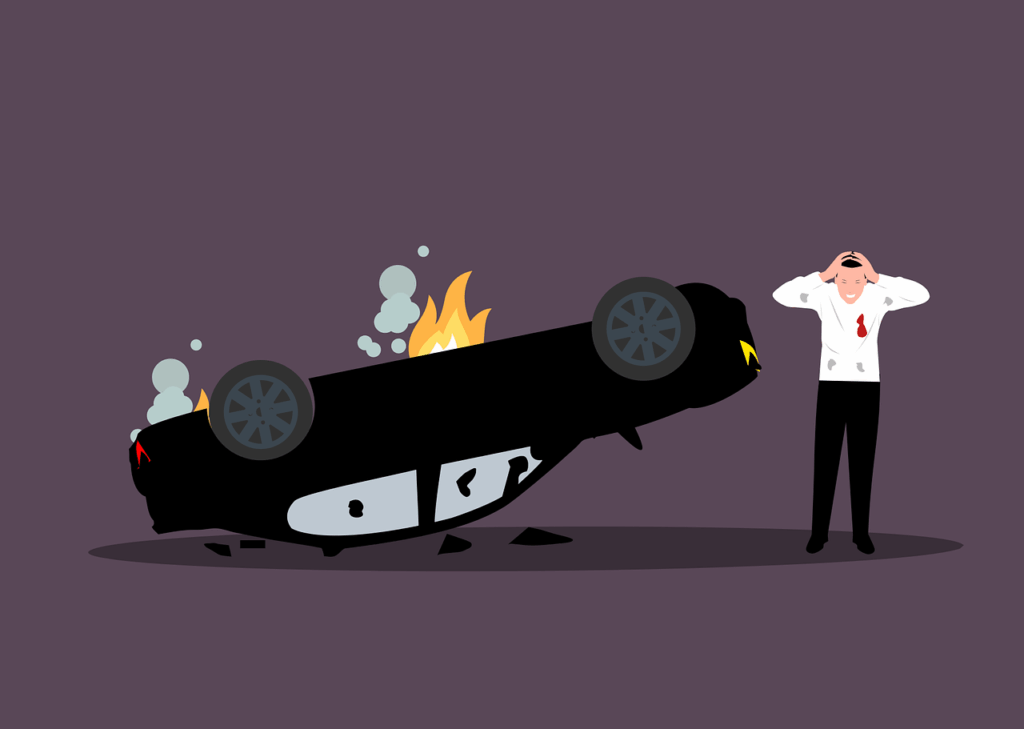
14. **The Lasting Legacy: A Precedent for Corporate Accountability and Resilience**Nearly a decade after the catastrophic event, the Tracy Morgan accident endures as a landmark case, deeply imprinted upon both legal precedent and cultural memory. It stands as a profound reminder of the devastating consequences that can emanate from negligence on the road, particularly when involving commercial vehicles and deficiencies in corporate oversight. The ultimate resolution of the case has helped to redefine the parameters of corporate responsibility within the transportation sector.
Beyond the substantial financial compensation, the lawsuit assumed a critical role in compelling a major corporation to accept accountability for its operational practices. It highlighted the instrumental function of legal action in advocating for enhanced industry safety standards and ensuring that companies rigorously uphold their duty of care to the public. The case definitively demonstrated that legal recourse can indeed compel systemic improvements, thereby fostering a safer environment for all road users.
The specific findings and adjudicated outcomes of the Morgan lawsuit are now widely regarded as a significant precedent in the realm of personal injury law. Legal experts frequently cite it as a prime example of successful litigation against a large corporation, particularly concerning complex issues such of driver fatigue and negligent scheduling. The case powerfully underscores the vital role of litigation in shaping safer communities and reinforcing robust corporate accountability across diverse industrial sectors.
Tracy Morgan’s personal journey of survival, arduous recovery, and triumphant comeback offers a powerful and enduring testament to human resilience and indomitable strength. His inspiring trajectory, from critical injury to a renewed and purposeful life, serves as a beacon of hope for countless individuals confronting their own profound challenges. It illustrates compellingly that even in the most arduous and darkest of times, recovery and the profound possibility of a better future are attainable through unwavering determination and comprehensive support.
As Morgan continues the process of rebuilding his life, he judiciously uses his influential platform not only to inspire others but also to actively promote road safety and to honor the cherished memory of his late friend, James McNair. The accident, despite its inherent tragedy, became a transformative turning point, fundamentally reshaping his career trajectory and imbuing him with a heightened and profound sense of purpose. His legacy is thus forged not merely through celebrity survival, but through a powerful narrative of justice pursued, accountability achieved, and an enduring commitment to catalyzing positive change in the world.

